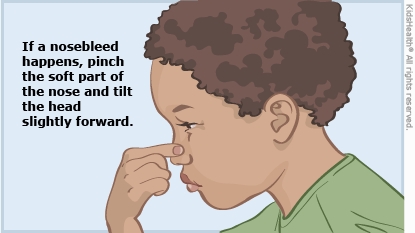Sometimes, when a young child puts something in their nose, it can get stuck. The health care provider used a special light to see the object in your child's nose but couldn't remove it. Your child needs to see an otolaryngologist (an ear, nose, and throat [ENT] doctor), who can remove it with special tools and a magnifier. If the nose looks infected, the health care provider gave your child antibiotics.
Here's how to care for your child at home until the ENT doctor can remove the object.


If a nosebleed happens:


Your child:


Can an object in the nose be dangerous? Yes, some objects can be dangerous. For example, button cell batteries (round flat batteries used in watches, toys, remote controls, and other devices) can cause burns inside the nose. Also, magnets put in the nose can pull toward each other, squeezing and causing damage to the part of the nose between the nostrils (the septum). An object in the nose also can get sucked in and go down the throat, possibly causing choking.
How can an object in the nose cause an infection? An object stuck in the nose (especially for a long time) can cause irritation that then gets infected. An infection in this part of the nose sometimes can move up into the sinuses (small hollow areas in the bones of the face) and other areas. If an infection happens, health care providers prescribe antibiotics to treat it.
How can I prevent my child from putting something in their nose again? Keep small objects (such as batteries, magnets, beads, earrings, crayons, and small toy parts) out of the reach of children. Tell your child that they should never put objects in their nose, ears, or any other body opening because they can get stuck. Adults should watch kids when they're around small objects at home, daycare, and preschool.